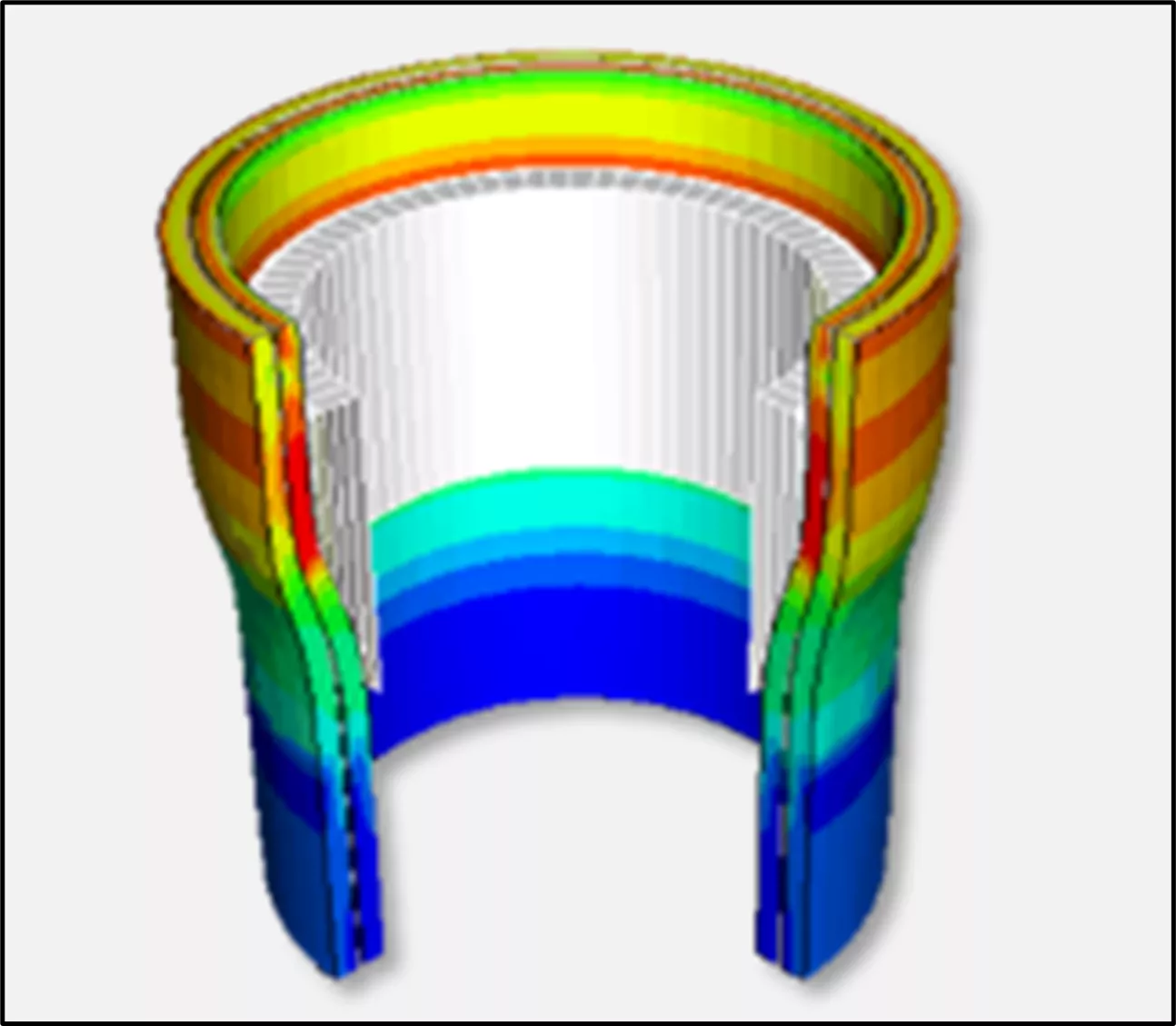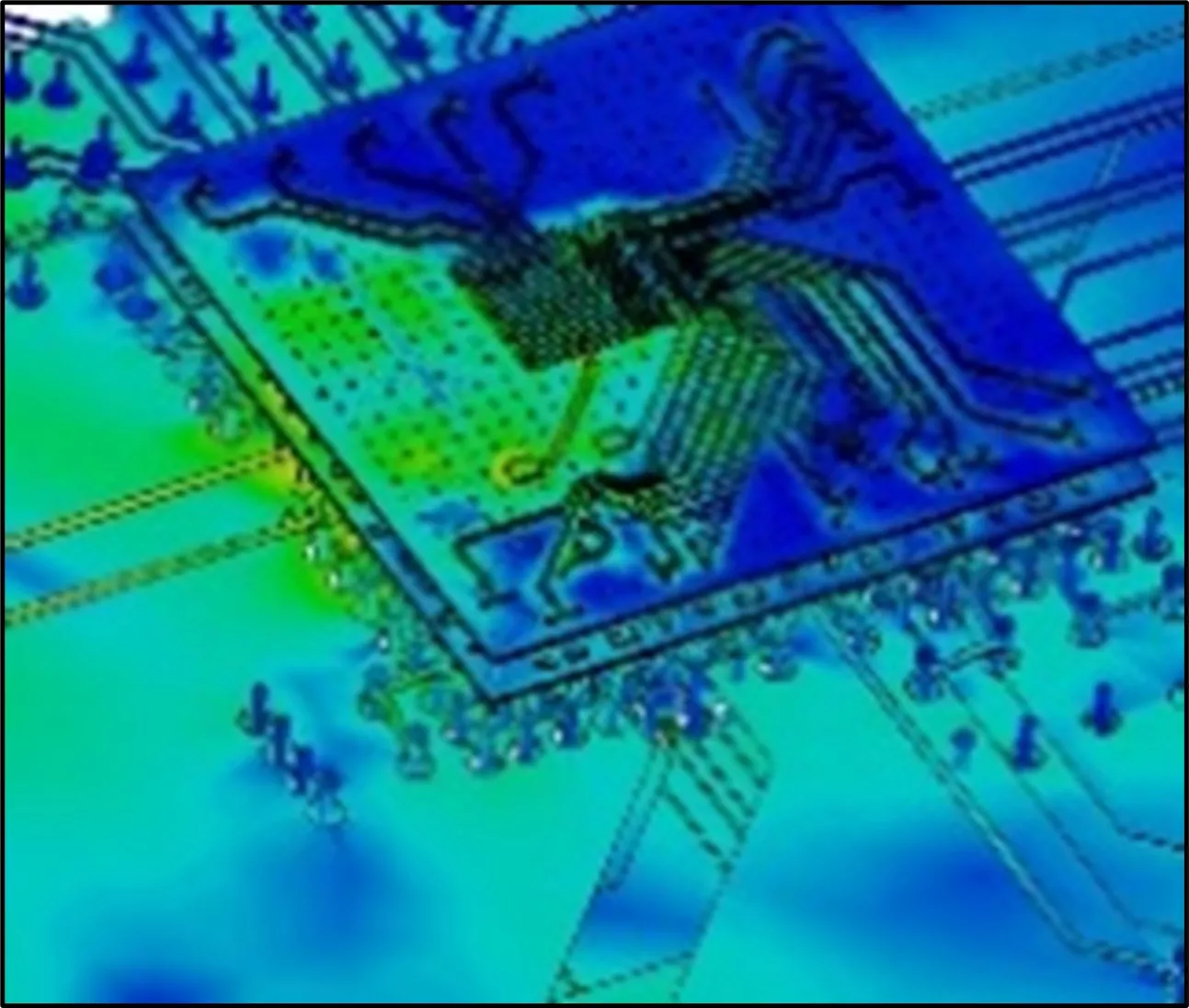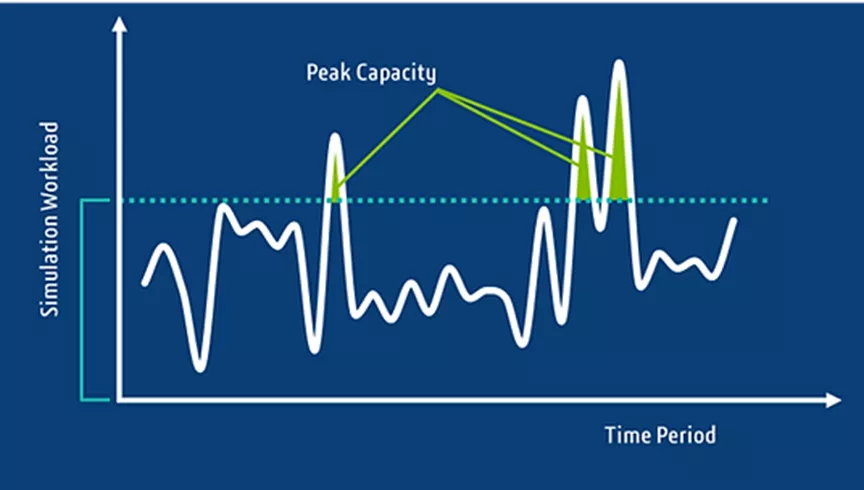Advancing Engineering Simplicity: SIMULIA’s New Unified Licensing Model
Simulation becomes more important by the day for competitive product innovation, but it comes at a cost. Can you do a more sophisticated simulation while keeping the budget under control? The answer is “yes” thanks to a new type of universal licensing and cloud compute for Abaqus, CST Studio Suite, and the other SIMULIA and 3DEXPERIENCE SIMULATION tools.
How Traditional FEA & CFD Licensing Limits You
A traditional engineering analysis tool has two primary components: a graphical user interface (GUI) application and a solver application. Some products combine the licensing of these two components, such as SOLIDWORKS Simulation, but it has its pros and cons for both the vendor and the customer.
Abaqus, however, separates GUI and solver licensing. For Abaqus, the solver license is traditionally referred to as a “token”. The more tokens an Abaqus user has, the more computing power (i.e., CPU cores and GPU devices) their Abaqus solver can access in order to solve faster.

Figure 1: A plot of how many Abaqus tokens are needed to run the solver on so many CPU cores.
This licensing schema becomes difficult when multiple essential simulation tools are following the same approach - a likely scenario when an Abaqus company adopts a more comprehensive “virtual prototyping” approach to simulation.
This approach reaches greater accuracy and reliability up to the point that it may replace some physical prototyping, by engaging additional physics beyond structural, such as fluids, electromagnetics, acoustics, and multibody dynamics. This can traditionally result in inflated software budgets that are hard to justify if all the tools are not used frequently.
Furthermore, investment in the more rarely used software can siphon budget from additional compute licensing for the more frequently used tools. For example, do you trade away 8 additional CPU cores of Abaqus compute licensing, which you would use 80% of the time, just to gain access to a CFD tool that would be used once a month?





Figure 2: Abaqus, PowerFLOW, Simpack, wave6, and CST Studio Suite simulate different physics and are traditionally licensed separately.
Outside of expanding into other physics, companies are also challenged to keep simulation tasks efficient by upgrading hardware and/or utilizing cloud services (…or doing less simulation!).
These pressures can pose difficult questions to companies and their simulation users. How compatible are the licenses with next-generation CPUs and GPUs? Will my licenses be able to be used on the cloud or are they stuck on my machines? If I do want to use the cloud, how hard is it to implement, and is that an additional cost? If I need additional computational capacity for a very short duration of time, what are my options?
The GoEngineer simulation consulting and support team recently went through this. Below is a picture of our very own aging compute cluster that was powered by traditional Abaqus licensing. Questions rang of: do we get new hardware, do we use the cloud, how do we use the cloud, how do we license it all, and what is the cost? We ultimately decided to retire our cluster, switch to a newer licensing schema, and take advantage of cloud compute. Our productivity gains have been impressive, and we couldn’t be happier.

Figure 3: The GoEngineer simulation consulting team’s old server room.
Here is what we did.
The SimUnit Solution: Simulate Whatever You Want, Whenever You Want
Enter the unified licensing model (ULM), available now for new purchases or as an equivalent replacement for your traditional licenses. This dramatic revision to simulation software licensing has three main goals:
- All Physics in One: Use any physics you want with the same license – structural, fluids, electromagnetics, and more.
- Local/Cloud Flexibility: Solve simulations with your on-premise hardware or solve on the 3DEXPERIENCE Cloud (which is always ready-to-go with the latest processors; no implementation (or HPC purchasing) required).
- Always Maximize Throughput: Add to your baseline 24/7 licensing with time-metered licensing for brief bursts of high-intensity computation.
Access to All Physics
Under the unified licensing model, the user still buys their GUI and their solver licenses separately, but those solver licenses are now universal among the portfolio of Dassault Systèmes simulation tools. With solver licensing being the bulk of the simulation software expense, ULM lowers the barrier of entry into any new physics to just the cost of a GUI seat. Here is a list of the compatible products:
| SimUnit Supported Software | Functionality |
| Abaqus | Structural FEA |
| 3DEXPERIENCE STRUCTURAL | Structural & Fatigue FEA |
| 3DEXPERIENCE FLUIDS | Navier-Stokes CFD |
| fe-safe* | Fatigue FEA |
| Tosca* | Topology & Nonparametric Optimization |
| Isight* | Parametric Optimization |
| PowerFLOW | Lattice Boltzmann CFD |
| XFlow | Lattice Boltzmann CFD |
| CST Studio Suite | Electromagnetics |
| Simpack* | Multibody Dynamics |
| 3DEXPERIENCE Optimization Tools | Process Automation & Design Optimization |
*On-premise compute only
Unprecedented Compute Flexibility
The speed of computation is a critical concern amongst analysts, hinging on the quality and availability of computing hardware and the budget limitations of solver tokens.
ULM addresses the hardware issue by allowing users to solve on either their local hardware or on the official cloud.
Local solves are fast and convenient when:
- Jobs are small
- You do day-to-day work and compute on different machines
- Your systems are the latest and greatest
- Internet access is limited
- You need complete end-to-end control of everything
- You have deeply customized processes
The cloud excels when:
- Jobs are very large
- Multiple jobs can be run in parallel
- You need to use your workstation for other tasks
- You have extreme compute needs on an inconsistent basis
- Your systems are no longer current
- Budget for hardware is limited
Traditional simulation solver tokens provide 24/7 usage at a set maximum amount of compute power. This pressures the cost-conscious user to buy only as many tokens as they plan to make constant usage of. What usually happens in practice is that there will be simulation sprints where a lot of simulation needs to get accomplished in a short amount of time, whether that’s one big analysis or many small ones. Then your project (or projects!) is delayed by a compute bottleneck due to your licensing.

Figure 4: How simulation workloads really happen, and what bottlenecks their execution.
ULM solves these limitations by introducing credits. The credit is a consumable license that provides a certain amount of computation time at the specified configuration (which is to say, if you solve with more cores, the credits are consumed faster). Valid for both on-premise and on-cloud compute, credit licensing provides flexible and instant access to high-core-count HPC configurations on the 3DEXPERIENCE Cloud for a very low entry price. Here are the credit and token conversion rates for running Abaqus on the 3DEXPERIENCE Cloud:
| Cloud Cores | RAM (GB) | SimUnit Credits/Hour | SimUnit Tokens |
| 4 | 61 | 19 | 28 |
| 8 | 122 | 27 | 41 |
| 16 | 245 | 35 | 56 |
| 32 | 490 | 44 | 78 |
| 46 | 1300 | 52 | 109 |
| 92 | 927 | 60 | 125 |
| 92 | 2600 | 67 | 167 |
| 184 | 1800 | 76 | 190 |
| 184 | 5200 | 88 | 275 |
See our Abaqus Buying Guide for all combinations of on-premise and on-cloud token and credit conversion rates. These rates vary for other physics solvers.
Users can have tokens, credits, or tokens and credits. By combining tokens and credits, simulation users can construct a best-of-all-worlds situation for themselves including a baseline of daily compute licensing and access to extreme resources on demand. And with SimUnits’ universality, it’s not just for one FEA or CFD (or other simulation) tool, but for all of them.
Conclusion
The unified licensing model offers an exciting opportunity for simulation departments of all kinds. Whether they are concerned about their budget, their throughput, or the depth and breadth of their simulation, SimUnits opens up the possibilities to take advantage of a growing portfolio of comprehensive engineering analysis tools, especially in the era of cloud computing.
Related Articles
Intro to CAD-Connected Composites FEA: A Game-Changer for Composites Design
3DEXPERIENCE Parametric Optimization: The Ultimate Tool for Data-Driven Design
How to Run Abaqus Simulations on the Cloud with the 3DEXPERIENCE Platform
FEA Critical Speed Analysis & Rotor Dynamics
Turbulence Models in 3DEXPERIENCE Fluid Dynamics Engineer Role

About Marcel Ingels
Marcel is a Senior Simulation Specialist at GoEngineer. He earned his BS and MS in Biomedical Engineering at the University of Toledo. With nine years of experience in the sim space, Marcel’s primary role lies in leading simulation projects in the medical device, aerospace, automotive, and defense industries, and in providing technical support and training on Abaqus and the 3DEXPERIENCE portfolio. His previous experience includes conducting analysis for a spinal implant start-up company and as a research assistant at an orthopedic research institute, where he focused on CAE analysis of impact biomechanics and orthopedic devices.
Get our wide array of technical resources delivered right to your inbox.
Unsubscribe at any time.